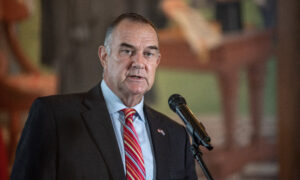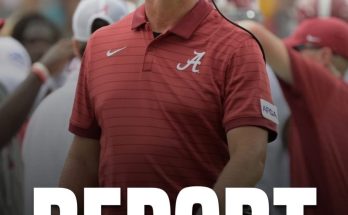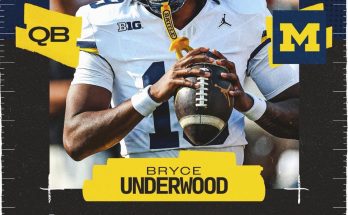It has been nearly a decade since Missouri’s professional football fans witnessed their beloved NFL team leave their state, a painful chapter in the state’s sports history that still resonates with many. Now, as memories of those days linger, Missouri lawmakers are preparing to take up a highly anticipated and controversial stadium funding plan. This proposal, which aims to bring a new professional football franchise back to Missouri, is stirring intense debate among politicians, residents, and sports enthusiasts alike.
Missouri’s NFL story took a heartbreaking turn in the mid-2010s when the St. Louis Rams, the state’s last NFL franchise, packed up and moved back to Los Angeles. The Rams had called St. Louis home since 1995, after relocating from California, and had cultivated a loyal fan base over the years. But the team’s departure was prompted by a combination of factors, including disagreements over stadium financing, the lure of a larger market, and the NFL’s broader realignment strategy. For many in Missouri, the loss was more than just about sports — it was a blow to community pride, local economy, and regional identity.
Since that time, Missouri has struggled to fill the void left by the Rams. While the state still boasts a passionate fan base for college football, and the NFL maintains a presence through occasional games and events, the absence of a local NFL team has left a gap in the professional sports landscape. Local businesses that once thrived on game-day crowds have felt the economic pinch, and city officials have looked for ways to revive the area’s reputation as a football hub.
Against this backdrop, the current stadium funding proposal has emerged as a beacon of hope for many. The plan, which lawmakers are set to debate in the upcoming legislative session, calls for a public-private partnership to build a state-of-the-art stadium in the greater Kansas City area, with the intention of attracting a new NFL franchise. The proposal includes a combination of state funds, city contributions, and private investment from local business leaders and potential team owners. If passed, it would mark one of the most significant efforts in recent years to restore Missouri’s status in the professional football world.
Supporters of the plan argue that the new stadium could revitalize the region economically and culturally. They point to the potential for job creation, increased tourism, and the return of game-day commerce to local restaurants, hotels, and retailers. Additionally, proponents emphasize the intangible benefits that come with having a home NFL team, including enhanced community pride and increased national visibility for Missouri cities. For many, the prospect of football’s return feels like a chance to reclaim a piece of the state’s identity that was lost with the Rams’ departure.
Moreover, advocates stress that modern stadiums have evolved beyond just being sports venues; they are multi-use facilities that can host concerts, conventions, and other large-scale events. This diversification, they argue, would ensure that the stadium remains a vibrant part of the community year-round, rather than a financial drain. The hope is that a well-designed, technologically advanced stadium will attract not only an NFL franchise but also serve as a catalyst for broader urban development and investment.
However, the plan faces considerable opposition from a range of voices, reflecting deep skepticism about the use of public funds for sports facilities. Critics question whether taxpayers should bear the financial risk associated with stadium construction, especially given past experiences in other cities where promised economic booms failed to materialize. They highlight concerns over cost overruns, ongoing maintenance expenses, and the potential for public money to subsidize wealthy team owners without delivering sufficient public benefit.
Some opponents also argue that Missouri’s priorities should lie elsewhere, particularly in areas such as education, infrastructure, healthcare, and affordable housing. They contend that investing hundreds of millions of dollars into a stadium project — even one backed by private funding — diverts critical resources away from urgent social needs. For these critics, the stadium represents a misplaced priority that could deepen economic disparities rather than alleviate them.
The debate also touches on regional dynamics within Missouri, with some communities more enthusiastic about the stadium than others. While Kansas City and its suburbs are primary beneficiaries of the proposal, there is less enthusiasm in St. Louis, where memories of the Rams’ departure are still raw. Some residents there feel excluded from the potential benefits and worry that Missouri’s focus on Kansas City will exacerbate regional divides. Meanwhile, smaller towns and rural areas question whether a stadium investment in an urban center will have any meaningful impact on their own economic prospects.
Political factors further complicate the discussion. Lawmakers must weigh public opinion, constituent concerns, and their own fiscal philosophies. Some see the stadium as a chance to score political points by delivering a high-profile project that can boost local economies and generate jobs. Others view it as a risky gamble that could haunt their careers if it leads to budget shortfalls or unmet promises. The negotiations behind the scenes are intense, with lobbying from various interest groups, negotiations over funding mechanisms, and efforts to include community benefits agreements to ensure local hires and minority-owned business participation.
The timing of the debate is significant. The NFL itself is expanding its reach, with rumors circulating about potential new franchises or relocations on the horizon. Missouri hopes to position itself as a competitive candidate by having the infrastructure and political will in place. The state’s leaders are keenly aware that missing this opportunity could mean another decade or more without a team, further entrenching the status quo.
Economic studies on the impact of stadiums provide mixed results, fueling the contentiousness of the debate. Some analyses indicate modest economic benefits and improvements in city image, while others suggest that the actual financial return to taxpayers is limited or even negative. The key variable appears to be the level of public investment and the ability of the stadium to attract consistent, large-scale events beyond football games.
One novel aspect of Missouri’s current proposal is the inclusion of a “stadium tax” that would apply only to game-day activities, such as ticket sales, concessions, and parking fees. This mechanism is intended to ensure that the stadium generates revenue without burdening taxpayers who do not attend events. However, opponents argue that this tax could discourage attendance or place an unfair burden on local businesses. There are also concerns about the long-term sustainability of such a revenue stream, especially if team performance or attendance fluctuates.
Community engagement has become a focal point of the debate as well. Proponents have organized public forums, solicited feedback, and emphasized transparency in planning, hoping to build grassroots support. Meanwhile, opponents have mobilized through social media campaigns, local news outlets, and advocacy groups, seeking to raise awareness about the potential downsides. The clash of narratives — economic revitalization versus fiscal responsibility — has captured the public imagination and heightened interest in the legislative process.
Beyond the economic and political dimensions, the stadium funding plan touches on the cultural and emotional fabric of Missouri. Football is more than just a game in many parts of the state; it is a tradition, a social gathering point, and a source of shared identity. The departure of the Rams left a void not easily filled by college football or other sports. For many residents, the return of an NFL franchise symbolizes hope, pride, and a reconnection with a larger national stage.
Yet this cultural longing must be balanced with practical realities. The cost of constructing a modern NFL stadium is enormous, often exceeding a billion dollars when factoring in land acquisition, construction, infrastructure improvements, and ongoing maintenance. Ensuring that such a large investment yields positive returns for the community requires meticulous planning, sound financial management, and a commitment to inclusive benefits.
As Missouri lawmakers prepare to debate the stadium funding plan, they face a complex set of challenges. They must reconcile competing visions of what the state’s future should look like, balance fiscal prudence with visionary ambition, and navigate the sometimes conflicting interests of diverse constituencies. The decision they make could shape Missouri’s economic and cultural landscape for decades to come.
In many ways, this debate represents a crossroads for Missouri — a chance to redefine its role in the world of professional sports and urban development, or a cautionary tale about the limits of public funding for high-profile projects. The stakes are high, and the emotions run deep. Whether the plan succeeds or fails, the discussion has already reignited passion and conversation about what it means to be a sports state in America.
For those who have waited patiently for the return of an NFL team, the upcoming debate offers a glimmer of possibility. For others wary of the costs, it is a reminder to demand accountability and transparency. And for all Missourians, it is a moment to reflect on the balance between dreams and reality — between the thrill of the game and the practical needs of the community.
In the months ahead, as the stadium funding plan moves through committee hearings, public testimonies, and legislative votes, one thing is clear: Missouri is once again in the spotlight, grappling with questions about identity, investment, and the future of professional football in the state. The outcome will reverberate far beyond the walls of the capitol building, touching the lives of fans, business owners, taxpayers, and citizens across Missouri.
The journey from loss to potential renewal is underway, and Missouri’s lawmakers hold the keys to opening the next chapter in the state’s NFL story — one that could restore pride, stimulate economic growth, and reunite a community around the sport they love. How they navigate this critical juncture will define Missouri’s sports legacy for years to come.



